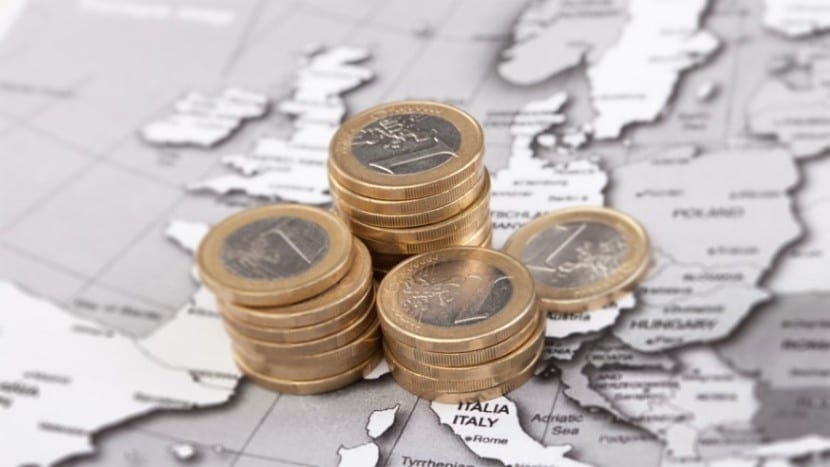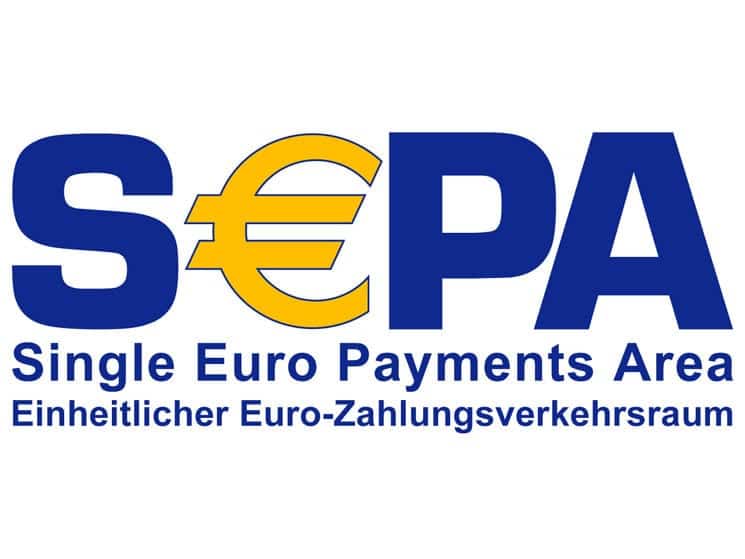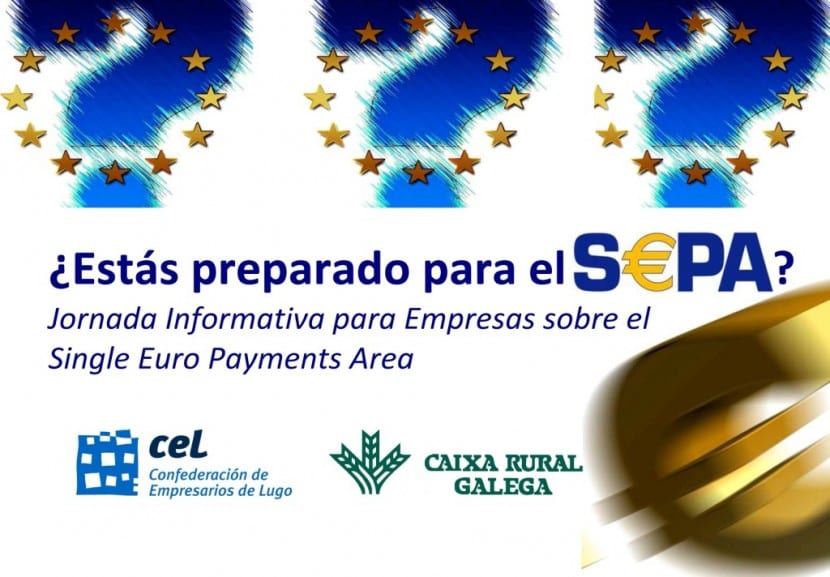
It is possible that on more than one occasion, have you heard the word SEPA but instead you do not know exactly what it is about. It is natural, since this type of information, unfortunately, is not usually given out of the blue to the clients of banking entities and it is really incomprehensible because it is a very important factor. And this can actually have a negative impact on the person concerned because they cannot enjoy the benefit at full capacity. For this reason and so that you have extensive information on the matter, in this post you will know what it is and what it is for.
All people have one or more bank accounts. This has happened for several decades thanks to the facilities involved in charging directly from there without the need to have physical money. This, in turn, helps to reduce person-to-person robberies, although it can obviously happen that the bank itself is robbed; in that case you will not lose the money because you have it guaranteed.
This without a doubt is one of the most positive aspects of the banks, since at least in that sense offers you a practically 100% guarantee.
However, there are other important aspects that they do not explain to their clients and this can have a negative impact on their interests, in addition to the fact that depending on what actions you want to do, if you do not know what it is and the procedures to be carried out, you will basically not be able to continue with the operation.
One of the clearest examples of this phenomenon would be the term SEPA, Although this service is active for everyone, not everyone knows what it is about.
What is SEPA?

Knowing what SEPA is will be crucial for your interests because this way you will be able to know more exactly the benefits that your current bank offers you.
SEPA is the abbreviation of Single European Payments Area or Unique Zone of Payments in Euros in Spanish, and it is an initiative of the European Banking Industry from the European Council supported by the European Commission, the Governments and the Central Banks of the most important European countries.
In a nutshell, SEPA comes to say that all those who are in the European zone regardless of whether they are a natural person, an entity or a company, can receive and make payments with exactly the same conditions regardless of whether those payments or transfers have required border processes between the different existing countries.
The SEPA zone is made up of the 27 countries of the European Union also adding countries such as Switzerland, Monaco, Norway, Iceland or Liechtenstein (does not include Andorra), with which, although they are not officially integrated into the EU, they have the same conditions.
This definition demonstrates the importance of knowing this aspect of banking because, a priori, you will not be able to carry out any type of transaction or transfer because you will not know all the minimum steps to carry out the operation, since in other more complex aspects it is the bank itself who makes the appropriate arrangements avoiding major headaches for the client.
How does the SEPA (Unique Payment Zone in Euros) affect if you are a bank customer?
As you have seen previously, this initiative helps 32 countries that make up SEPA (27 countries of the European Union and 5 more countries added in the treaty), helps both payments and collections have the same conditions regardless of the country in question.
In turn, this facilitates that both national and international payments (countries that make up the SEPA), are much easier to make, unlike that before this treaty everything was much more complicated.
In addition, thanks to this initiative, there are some advantages that there were not before when paying, and they are things such as:
- You can have a single account to make payments
Thanks to this treaty, anyone can have a unique account to make payments in euros between the integrated countries of the SEPA, thus in this way there is more freedom of movement.
- Improvements are achieved in payment processes
Thanks to these improvements in the payment processes, users can choose several methods that can facilitate the means of disbursement, such as through an electronic card, from a mobile device or obtain an electronic invoice. In the past the processes were much slower and, of course, there were not so many payment methods accessible.
- Increased levels of security throughout
Thanks to the SEPA zone, all member countries can enjoy greater security in their payments, avoiding any conflict that may arise; a very interesting fact to take into account because, after all, there is a higher percentage of guarantees.
- Elimination of international payment barriers
Thanks to the treaty that exists between the member countries of the SEPA, the barriers in international payments that existed are no longer in operation and there is practically almost absolute freedom.
- Affected payment items
In case you want to know how many payment elements affected there are four:
- Current bank cards
- Direct debits are replacing current Spanish direct debits
- Transfers that are superseded by current domestic transfers
- Current bank accounts have a new code called IBAN
Changes in payment instruments

Thanks to the SEPA agreement between the member countries, there are changes in the payment instruments and they are:
- Transfers: all bank transfers are made through the BIC or IBAN.
- Cards: one of the most interesting news about credit and debit cards is the built-in chip called EMV. Most Spanish businesses already have this feature to make the charges for another built-in chip called POS, which thanks to it payments are safer because they are not made by signature but through the card's own PIN. fakes.
- Direct debit orders: the direct debit orders are the same as now; For an entity to issue a charge to a bank account, it must do so with the express authority of the holder, with a different characteristic depending on the case. For example, for the entity to refund the amount it has 10 business days, 13 months for the incorrect rectification of an operation or 8 weeks to return authorized receipts.
What is the IBAN and the BIC?
Given that IBAN and BIC have a lot to do with the SEPA agreementWe are going to give you its definition so that, when requested, you know what it is at all times.
- IBAN: It is the identifier of all bank accounts, that is, when you make a transaction, they will know whose account it is thanks to this code and it is the 4 digits at the beginning of the bank account, in the case of Spain something similar to this: ES00.
- BIC: is the bank identifier for international transfers. Each bank has its own. For guidance, the code would look like this: INGDESHHUYYY.
Does SEPA Really Offer Advantages?
Thanks to the agreement that exists with SEPA, there really are advantages, because previously international transactions, regardless of which country it was, had higher costs and less security in transactions.
Now you can make transfers in France, the Netherlands, Germany, the United Kingdom ... without this posing a serious problem or so many expenses in the operation.
Conclusion
To conclude, we are going to make a short summary so that all the concepts that you have learned in this post are not forgotten and you can receive money or make bank transfers without any problem.
What is SEPA?: it is a treaty that exists between all the countries of the European Union (27) and 5 other non-EU countries (Switzerland, Monaco, Norway, Iceland or Liechtenstein not including Andorra) to be able to make bank transfers and receive money with total freedom and security. Thanks to this, there have been different changes when making transactions that practically favors 100% security because payments can be made with debit or credit cards through the POS code and there are also two more identifiers within a bank account, the BIC and the IBAN.
What is the BIC?: it is a code that identifies the bank for national transfers and each one has its own. To find out the code of your bank you can ask it directly at the branch or through its website.
What is the IBAN ?: This is an identifier that all bank accounts currently have. It is a way to know from which country the income or transfer comes. This new code is at the beginning of the bank account numbering. To find out which one is yours, you must check it yourself with your passbook or ask the bank directly.
Now that you know what SEPA is, take advantage of the benefits and have more financial freedom internationally speaking.
After the legal term, many companies are still looking for a way to adapt to these regulations as soon as possible. District K programs already include the ability to manage payments under SEPA, so the problem is solved without cumbersome restructuring or adaptations.